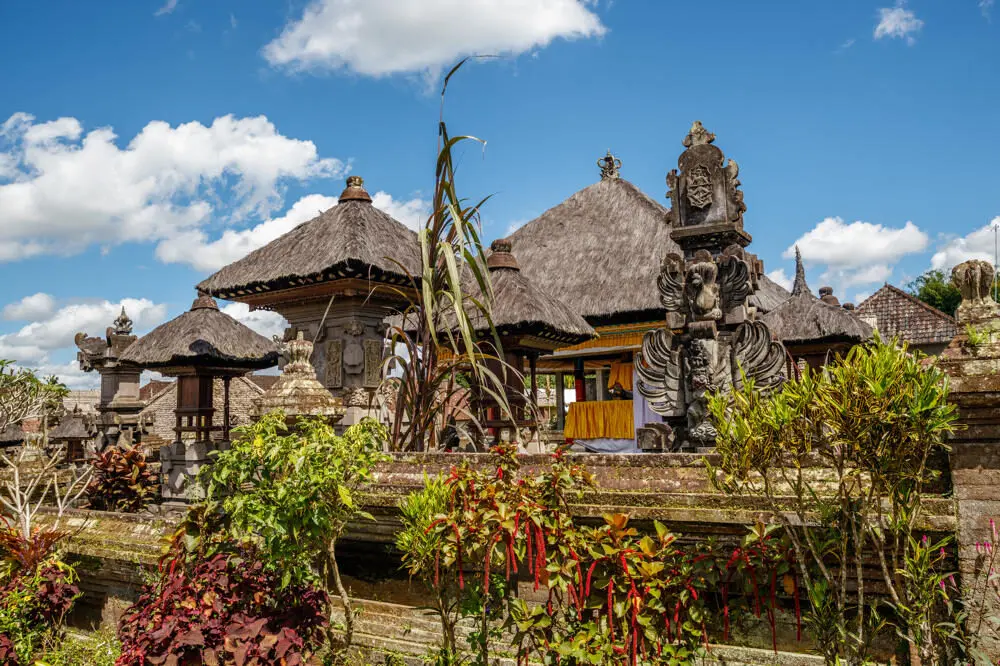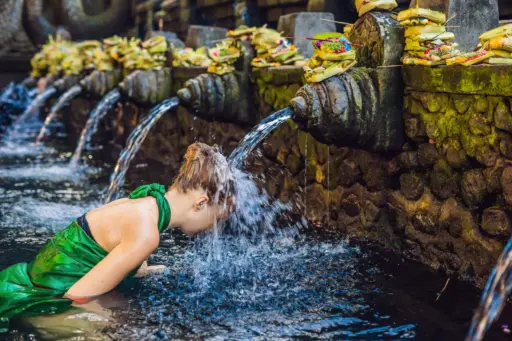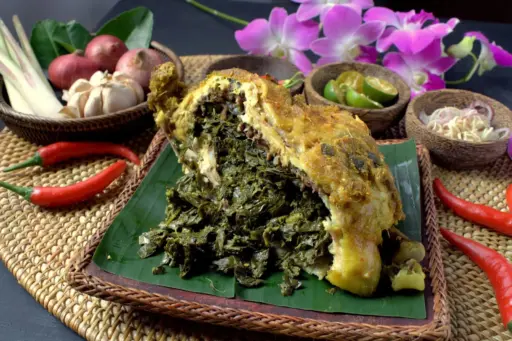THE HEART OF BALI BEATS IN ITS VILLAGES
Many travellers to Bali never step beyond the beaches of the south, the cafes of Ubud, or the bars of Canggu. Yet, beyond the tourist zones lies the island’s true heartbeat – its villages. Here, time moves at a different pace. Morning begins with roosters, not alarms. Days are shaped by temple ceremonies, rice planting, and market chatter. Traditions stretch back centuries, kept alive through rituals, architecture, and the rhythm of communal life.
Exploring Bali’s traditional villages is not just sightseeing – it is stepping into a living cultural landscape where the island’s values of harmony, spirituality, and community are woven into daily routines.
THE ANATOMY OF A BALINESE VILLAGE
A Balinese village, or desa, is not just a collection of houses. It is a carefully planned community guided by tradition.
· Spatial organisation: Villages follow the Tri Mandala concept, with spaces arranged from sacred (mountain-facing) to neutral (central areas) to less sacred (sea-facing).
· Banjar system: Each village is divided into neighbourhood groups called banjar, which handle community decisions, ceremonies, and social events.
· Temples: Most villages have at least three key temples – the Pura Desa (village temple), Pura Puseh (temple of origin), and Pura Dalem (temple of the dead).
Life revolves around these structures, and the calendar is punctuated by temple festivals and communal work days.
BALI AGA VILLAGES – ECHOES OF THE ISLAND’S EARLIEST SETTLERS
The Bali Aga are considered Bali’s original inhabitants, living in mountain villages that predate the arrival of Hindu-Javanese influence. Their traditions, architecture, and customs are distinct from the rest of Bali.
Tenganan
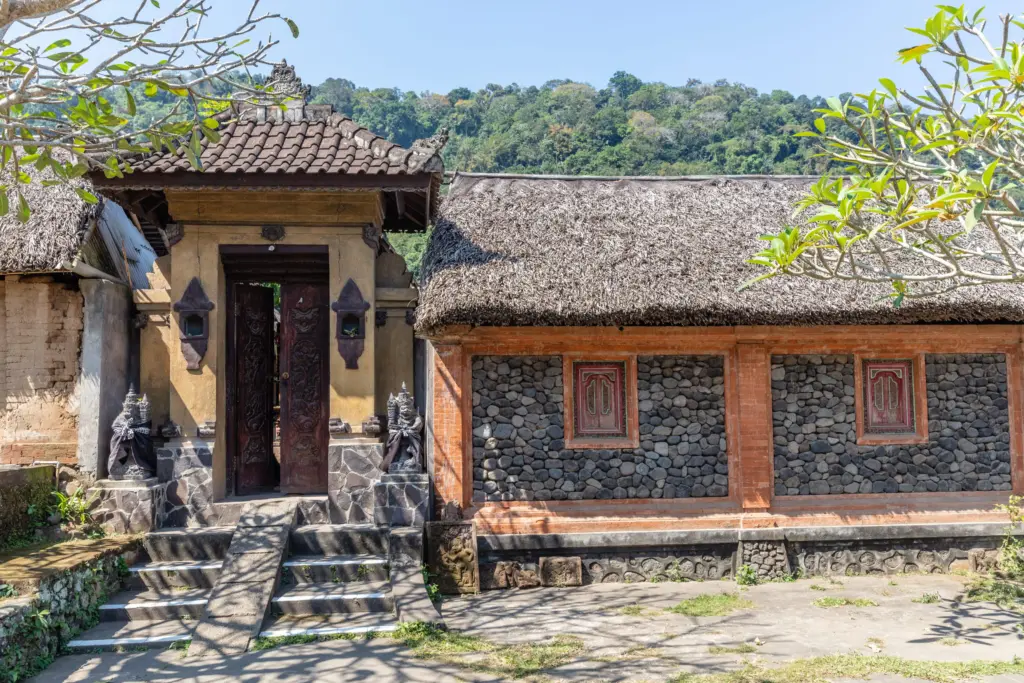
Known for its rare geringsing double-ikat textiles, woven only here. Houses are built in symmetrical rows with stone walls and bamboo roofs. Visitors can watch weaving, meet artisans, and learn about the Perang Pandan (pandanus battle) festival.
Trunyan
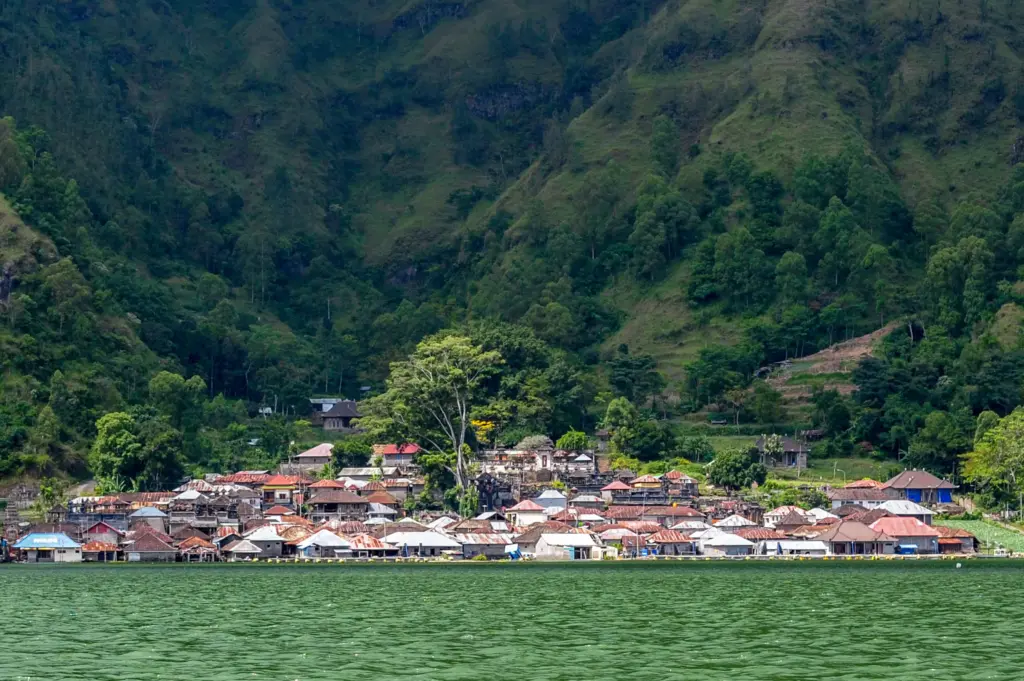
Famous for its unique burial practices – instead of cremation, bodies are placed in bamboo cages and left to decompose naturally, protected by a fragrant tree. It is located on the shores of Lake Batur and accessible only by boat.
Penglipuran – Bali’s Best-Preserved Village
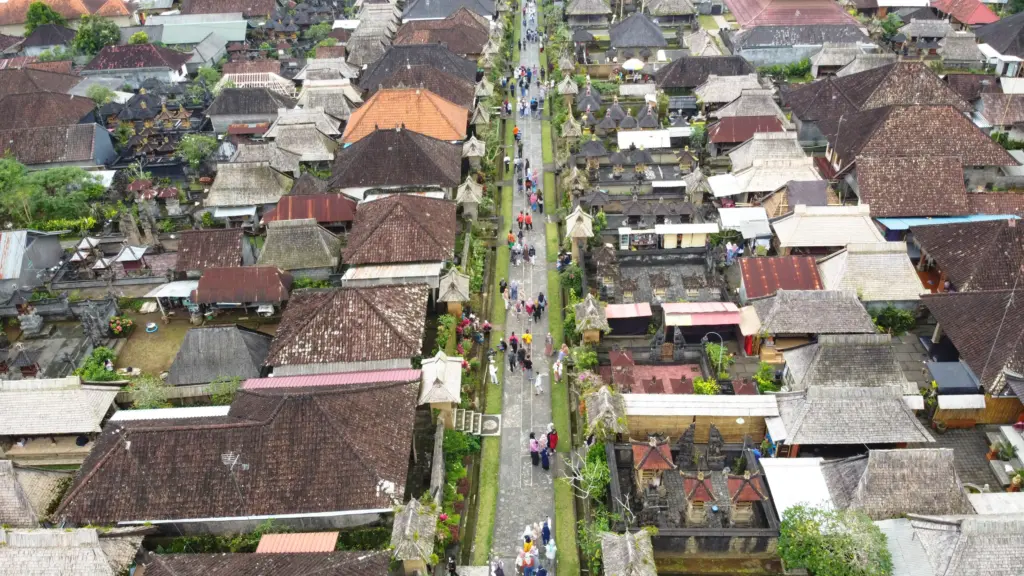
Penglipuran, in Bangli Regency, is often called one of the cleanest villages in the world. It is a model of traditional architecture and community discipline.
· Car-free streets: Visitors walk along a central stone path flanked by traditional gates and gardens.
· Uniform house layouts: Each home has a family shrine, a pavilion for ceremonies, and an open kitchen area.
· Community rules: Strict regulations preserve the village’s appearance and maintain harmony.
While Penglipuran is well known, it is still worth visiting for its authenticity and the warm welcome of its residents.
FARMING COMMUNITIES – LIFE SHAPED BY RICE
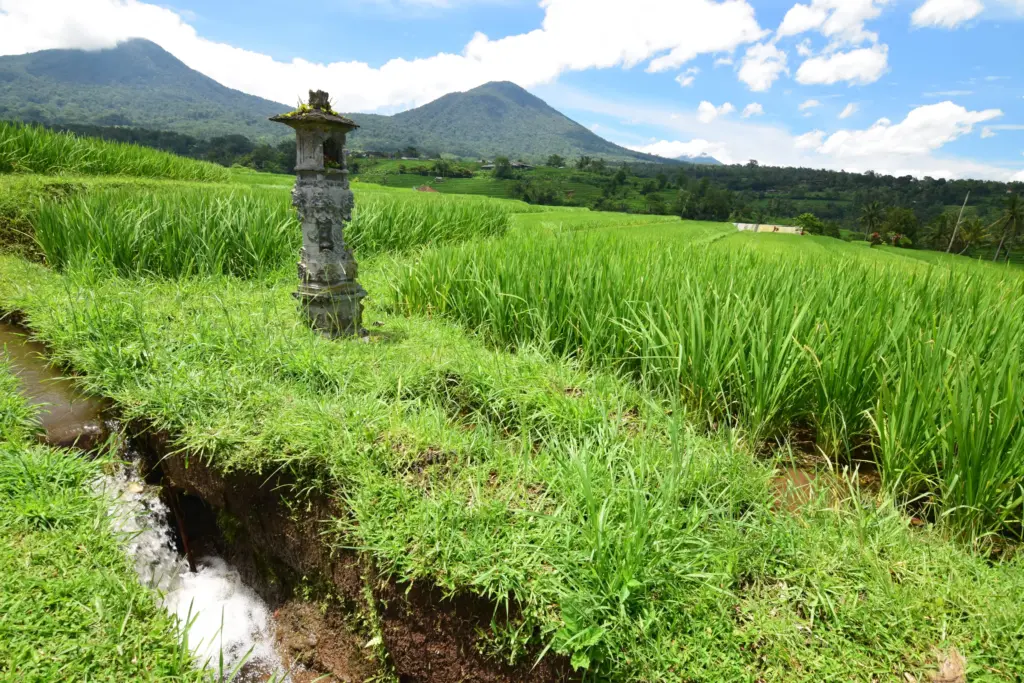
In Bali’s rural areas, much of daily life is tied to agriculture, especially rice farming.
· Subak irrigation: A UNESCO-recognised cooperative water management system dating back over 1,000 years.
· Seasonal rhythm: Planting, tending, and harvesting are coordinated by water temples and priests.
· Community labour: Families work together in the fields, and ceremonies mark key stages of the rice cycle.
Villages like Jatiluwih and Sidemen offer opportunities to join guided walks through the paddies, talk to farmers, and even try planting rice yourself.
DAILY LIFE – MARKETS, KITCHENS, AND COURTYARDS
Morning in a Balinese village begins early. Before sunrise, women prepare offerings, men head to the fields, and the markets fill with chatter.
· Markets: Small, bustling, and full of local produce, flowers for offerings, and freshly made snacks.
· Cooking traditions: Meals are often cooked over wood fires in open-air kitchens, using fresh ingredients from the garden or market.
· Communal spaces: The bale banjar (community hall) is the social centre, hosting meetings, dance rehearsals, and celebrations.
CEREMONIES AND CULTURAL CONTINUITY
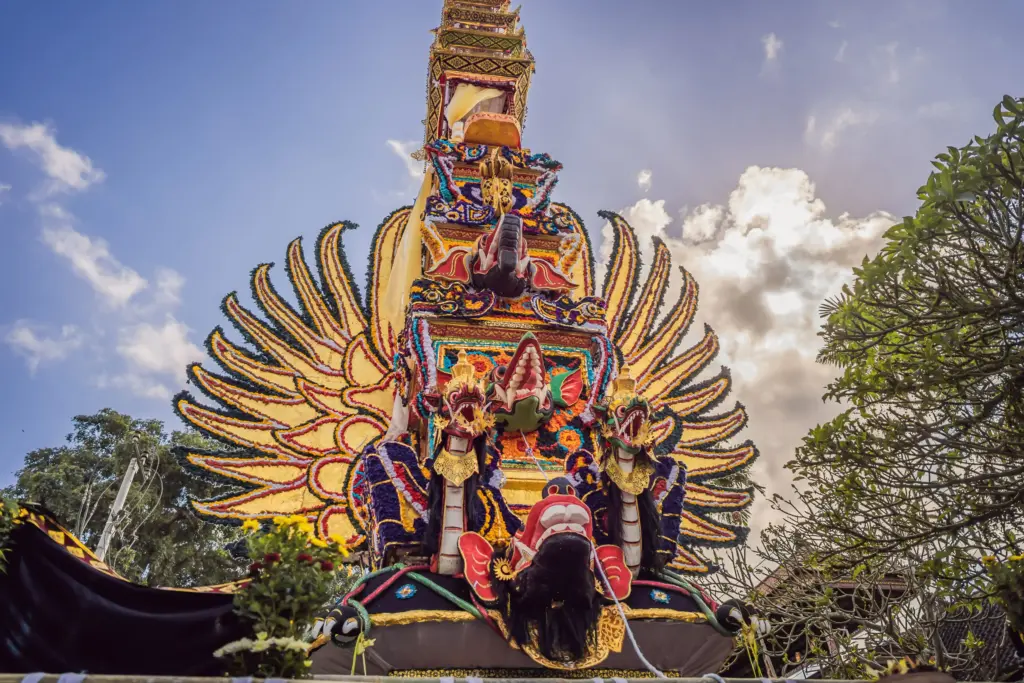
Ceremonies are the lifeblood of village life. They range from small daily offerings to grand temple festivals lasting several days. The main ceremonies are:
· Odalan: The anniversary of a temple, held every 210 days according to the Balinese calendar.
· Cremations: Known as ngaben, these are elaborate and colourful rites of passage, often involving the entire community.
· Coming-of-age rituals: Such as the tooth-filing ceremony (metatah), which symbolises the smoothing of human passions.
Visitors are often welcome to observe, but respectful behaviour and modest dress are essential.
RESPONSIBLE VILLAGE TOURISM
Bali’s villages are living communities, not open-air museums. When visiting:
· Dress modestly and wear a sash in temple areas.
· Ask before photographing people, especially during ceremonies.
· Support local businesses by buying handicrafts directly from artisans.
· Avoid disrupting daily routines – remember you are a guest.
Some villages have set up homestays or guided cultural programs, providing an income source that helps preserve traditions.
SUGGESTED VILLAGES TO VISIT
· Sidemen (Karangasem): Terraced rice fields, weaving, and mountain views.
· Taro (Gianyar): Ancient white cows, sacred temples, and traditional farming.
· Serangan (Denpasar): Fishing heritage and turtle conservation.
· Blahbatuh (Gianyar): Known for gamelan making and shadow puppetry.
WHY VILLAGE LIFE MATTERS TO BALI’S FUTURE
Rapid development and tourism bring both opportunities and challenges. Traditional villages are cultural anchors, safeguarding language, rituals, and sustainable farming. By visiting respectfully, travellers help ensure these traditions continue for future generations.
Bali’s villages offer more than scenery – they are living classrooms where you can see how spirituality, community, and nature intertwine. Whether you walk the stone lanes of Penglipuran, watch a weaver in Tenganan, or join a planting day in Sidemen, you are stepping into the real Bali – a place where life is still guided by the rhythm of the land and the blessings of the gods.
By exploring these cultural heartlands, you gain not only memories but also a deeper understanding of the values that make Bali unique. Wander Beyond Ordinary!
